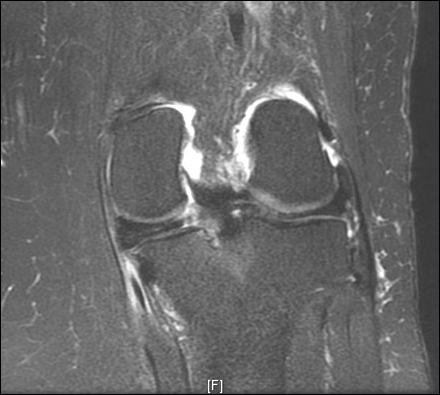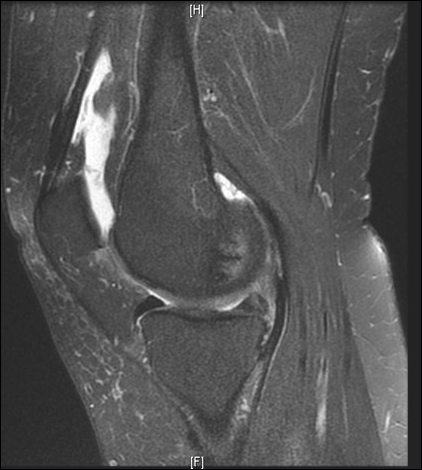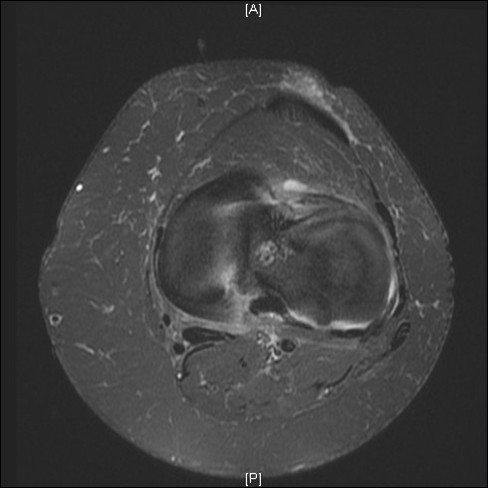Meniscal root tears can be managed operatively and nonoperatively
Damage to the meniscal root can occur acutely, often in multi-ligamentous knee injury or traumatic hyperflexion, or chronically, secondary to degenerative changes. However, due to sufficient vascularization of the meniscal root, arthroscopic techniques can be undertaken to repair lesions with either transosseous sutures or suture anchors.
Biomechanics
Injury to the posterior root of the medial meniscus modifies tibiofemoral contact pressures and kinematics. A posterior root tear results in a 25% increase in contact pressure, compared to the intact contralateral side. Furthermore, contact pressures of damaged meniscal roots are similar to contact pressures seen in patients after total medial menisectomy

Laith M. Jazrawi
Treatment options
Meniscal root tears can be managed both operatively and nonoperatively. Nonoperative management consists of symptomatic treatment with NSAIDs, activity modification or an unloading brace. Patients who are poor surgical candidates, such as multiple comorbidities, have advanced degenerative joint disease, or are elderly should be considered for nonoperative management.

Figure 1. Root repair is indicated in two main groups of patients for both the relief of symptoms and the prevention of degenerative joint disease.
Source: Jazrawi LM
Operative management of meniscal root tears traditionally was limited to partial or total menisectomy. These procedures provide short-term symptomatic relief with unknown long-term consequences. These operations should be reserved for patients with chronic tears with symptomatic grades 3 or 4 chondral lesions, who fail nonoperative management. However, in a retrospective study of 58 patients comparing outcomes of partial menisectomy and repair following a medial meniscal root tear, participants in the repair group had greater Lysholm and IKDC subjective knee scores and less progression of arthritic changes, measured by Kellgren-Lawerance radiographic grading and joint-space narrowing, at mean 4-year follow-up.
Operative repair of the meniscal root helps to restore the hoop tension of the menisci and leads to better clinical and radiographic results up to 2 years after surgery. As shown in Figure 1, root repair is indicated in two main groups of patients for both the relief of symptoms and the prevention of degenerative joint disease:
1) Acute traumatic root tears in patients without evidence of significant pre-existing osteoarthritis; and
2) Chronic symptomatic root tears in young or middle-aged patients without significant arthritis or greater than grade 2 chondral lesions.

Figure 2. A 50-year-old woman complains of increasing left medial joint pain, especially with squatting. There is mild effusion, no ligamentous instability and medial joint line tenderness on exam. Her body mass index is 33. Meniscal root injury is shown on a T2 coronal view. What would you do?
Source: Jazrawi LM

Figure 3. Shown is shown on a T2 sagittal view.
Source: Jazrawi LM

Figure 4. Shown is the T2 axial view.
Source:Jazrawi LM
The patient in this case has a medial meniscus root tear with minimal osteoarthritis evident on T2-weighted MRI (Figures 2-4). Her symptoms are chronic in nature and warrant a period of conservative treatment, including a physical therapy program and cortisone and or hyaluronic acid injections.
After 3 months of nonoperative treatment, if symptoms persist, then she would be a candidate for surgical repair based on MRIs showing minimal osteoarthritis. Repair techniques include suture anchor technique via a posteromedial portal or repair via an anterior approach with arthroscopic flip cutter and button fixation with anterograde suture passage.
Reference:
A video which demonstrates both repair techniques is available at NYU HJD Medial Meniscal Root Repair: Surgical Technique.
Laith M. Jazrawi, MD, is chief, Division of Sports Medicine, associate professor, Department of Orthopaedic Surgery, NYU Hospital for Joint Diseases, Center for Musculoskeletal Care, New York City.
Disclosure: Jazrawi has no relevant financial disclosures.
